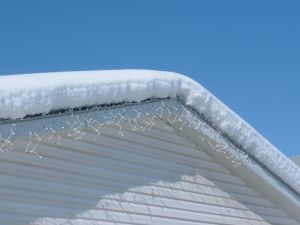It’s that time of year again! The temps are dipping and the snow is on its way. This is when we see an increase in the risks for work accidents, injuries and fatalities for many workers throughout the state.
Each year, there are workers who are seriously injured or even killed while conducting snow/ice removal from on top of buildings, decks or other structures. Officials with the Occupational Safety and Health Administration (OSHA) looked into 16 serious injuries and fatalities over the last 10 years from these kinds of accidents. They concluded that all of these accidents could have been prevented!

Our Quincy workers’ compensation lawyers understand that there are many reasons why we have snow and ice removal crews. When you get too much ice or snow on top of a structure, you run the risk of overloading and even collapse. In many of these jobs, workers climb right onto the roof or deck to remove the snow. They use equipment like rakes, shovels, ladders and even snow blowers. There are even aerial lifts involved in some cases. These devices are used when workers apply de-icing materials. Either way, the employees who perform these duties face some serious risks of on-the-job injuries. Many of them don’t have the proper training to be completing these duties.
In recent years, injuries from these kinds of jobs have ranged from amputations to eyes injuries to various other injuries. Roofs can collapse. Tip-overs can result from improperly used aerial lifts. A worker can become entrapped and even suffocate when falling into snowpiles or under snow drifts. They run the risk of getting electrocuted and shocked when working near power lines and with extension cords. It’s cold out there so many of them run the risk of frostbite and there are even risks of musculoskeletal injuries that can result from overexertion.
Preventing Falls during Snow Removal:
-Try to use removal methods that don’t involve employees going on to roofs.
-Before starting a job, make sure you evaluate the loads exerted on roofs. Take into consideration the weight of the snow, the equipment being used and the workers.
-Make sure that all workers have the proper fall protection equipment.
-Make sure that all workers know how to properly use aerial lifts and ladders safely.
Consider asking a few questions before starting a job. Are there any hazards on the roof that might be hidden by the snow or the ice? Can the job be done without putting workers on the roof? Is it necessary for the snow to be removed? What kinds of tools are needed and are employees trained on how to properly use these tools? What kind of fall protection is needed? What training tools are needed to make sure that everyone works safely? How will you protect people on the ground from ice and snow falling off of the roof during the removal process?
The workers’ compensation attorneys at Jeffrey Glassman Injury Lawyers are here to offer free and confidential consultations to those who have been injured on the job. Call (617) 777-7777 today!
More Blog Entries:
Young Employee Loses Fingers in New England Work Accident, Massachusetts Workers’ Compensation Lawyers Blog, November 15, 2012
Window Washer Accidents Target of Alliance, Massachusetts Workers’ Compensation Lawyers Blog, November 5, 2012
 Massachusetts Workers Compensation Lawyers Blog
Massachusetts Workers Compensation Lawyers Blog

